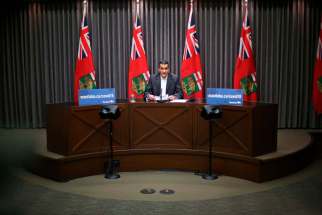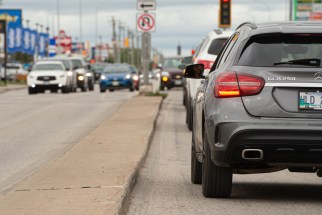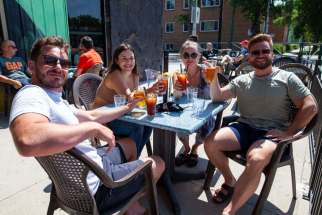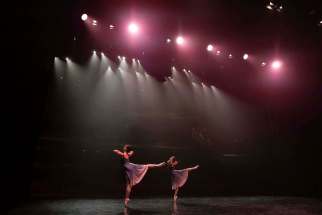Winnipeg’s 20-somethings can teach peers vaccine lesson
Read this article for free:
or
Already have an account? Log in here »
To continue reading, please subscribe:
Monthly Digital Subscription
$0 for the first 4 weeks*
- Enjoy unlimited reading on winnipegfreepress.com
- Read the E-Edition, our digital replica newspaper
- Access News Break, our award-winning app
- Play interactive puzzles
*No charge for 4 weeks then price increases to the regular rate of $19.00 plus GST every four weeks. Offer available to new and qualified returning subscribers only. Cancel any time.
Monthly Digital Subscription
$4.75/week*
- Enjoy unlimited reading on winnipegfreepress.com
- Read the E-Edition, our digital replica newspaper
- Access News Break, our award-winning app
- Play interactive puzzles
*Billed as $19 plus GST every four weeks. Cancel any time.
To continue reading, please subscribe:
Add Free Press access to your Brandon Sun subscription for only an additional
$1 for the first 4 weeks*
*Your next subscription payment will increase by $1.00 and you will be charged $16.99 plus GST for four weeks. After four weeks, your payment will increase to $23.99 plus GST every four weeks.
Read unlimited articles for free today:
or
Already have an account? Log in here »
Hey there, time traveller!
This article was published 12/10/2021 (1519 days ago), so information in it may no longer be current.
COVID-19 cases may be on the rise in Manitoba, but infection rates in Winnipeg continue to remain stable. There are two reasons for that: Winnipeg has the highest vaccine uptake in the province and public health measures in the capital city are working.
Manitoba’s case counts have nearly doubled since early September, driven largely by soaring numbers in the Southern Health region and moderate increases in other parts of rural and northern Manitoba.
The province’s test-positivity rate has increased to 3.9 per cent from 2.4 per cent since Sept 2.

It’s a different story in Winnipeg, even though bars and restaurants are teeming with patrons, students have returned to class and thousands of fans are filling the seats at Canada Life Centre for large-scale events.
Winnipeg had an average daily COVID-19 case count of 20 in the first week of September. It fell to 16 the following week and returned to 20 a week later. It inched up to 23 the week of Sept 26 and was 22 last week. Winnipeg’s test positivity rate has dipped to 1.2 per cent from 1.5 per cent during that period. The capital city is in pretty good shape.
It’s no surprise. Almost 85 per cent of Winnipeggers over the age of 12 are fully vaccinated, provincial government data show. The Interlake-Eastern health region is second at 78 per cent; Prairie Mountain and Northern regions are third at around 76 per cent. Southern Health continues to lag behind with only 63 per cent of eligible residents fully immunized.
Young Winnipeg adults are leading the way. Just over 88 per cent of Winnipeggers between the ages of 20 to 29 are now fully vaccinated (a staggering 95 per cent have had at least one dose). It’s by far the highest vaccine uptake in their age group of any health region. The closest to that is in the Northern region where just over 71 per cent of people in their 20s are fully vaccinated (it’s below 70 per cent in all other parts of the province, including 51 per cent in Southern Health).
Twenty-somethings in Winnipeg have a higher vaccination rate than every other demographic in the city under the age of 60. It’s pretty impressive.
It’s tempting to conclude the higher uptake is because young Winnipeg adults have more active social lives; they may place greater value on having proof-of-vaccine QR codes to get into bars, restaurants and entertainment facilities. That might be part of it. But it doesn’t explain why uptake in all other regions for that age group is significantly lower than in Winnipeg.
Maybe Winnipeg’s younger generation understands the importance of getting vaccinated better than most.
In any event, they’re helping to keep infection rates down.
Public health orders are also contributing to low case counts in Winnipeg. Proof-of-vaccinations, which most Winnipeggers appear to support, are undoubtedly helping to reduce the spread of the virus. It’s been over two weeks (the normal incubation period for COVID-19) since the first large-scale sporting event in Winnipeg, when almost 15,000 masked and fully-vaxxed Winnipeg Jets fans piled into the Canada Life Centre for the team’s first pre-season home game. There have been several large-scale events since then. So far, there’s been no spike in cases.

The indoor mask rule is also a contributing factor. Buy-in is so strong in Winnipeg that when the province briefly lifted the rule in August, most Winnipeggers kept wearing their masks anyway. Masks work; they reduce droplets from spreading between people and cut down on the aerosolization of the virus.
High vaccine rates, proof-of-immunization and masks are allowing life to return to normal in Winnipeg. Whether that holds up after the Thanksgiving weekend (when unvaccinated Winnipeggers may have spread the virus more than usual during indoor family visits) remains to be seen. We’ll find out in about two weeks. If the numbers don’t hold, some public health measures may have to be reinstated.
The only way to avoid that in the long run is for more people to get vaccinated. The evidence on that is crystal clear.
tom.brodbeck@freepress.mb.ca

Tom has been covering Manitoba politics since the early 1990s and joined the Winnipeg Free Press news team in 2019.
Our newsroom depends on a growing audience of readers to power our journalism. If you are not a paid reader, please consider becoming a subscriber.
Our newsroom depends on its audience of readers to power our journalism. Thank you for your support.







